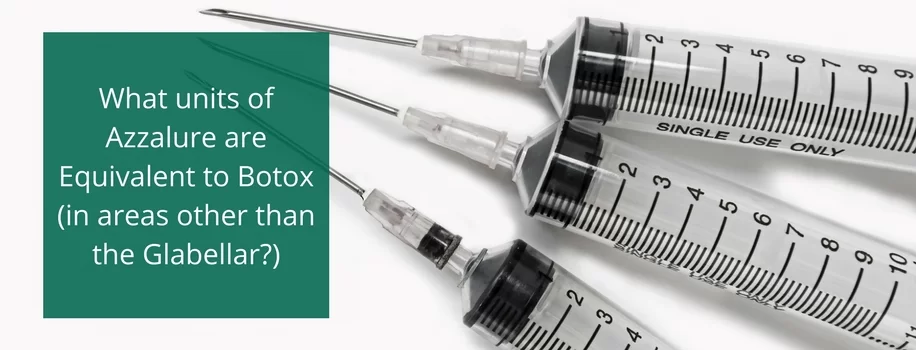Going into business with Botulinum Toxin does not have to be all about banishing wrinkles and filling-in frown lines.
To the contrary, a number of techniques with Botox (particularly the Advanced Level procedures) allow sophisticated re-sculpting such as the Cheek and Jowl Lift or Platysmal Band treatment. Others offer greatly increased standards of living to patients in terms of improved confidence and well-being: these are far more than “aesthetic” procedures and there is no finer example than Hyperhidrosis Treatment.
Hyperhidrosis is just a fancy name for excessive sweating. In about 1.0% of the population (according to The Hyperhidrosis Support Group) the sympathetic nervous system works at an overly high level. This means that, instead of simply regulating body temperature, Hyperhidrosis sufferers sweat profusely from certain body parts, often at inappropriate times, causing extreme embarrassment.
The most common areas for patients to experience Hyperhidrosis are:
- The palms of the hands (Palmer Hyperhidrosis)
- Soles of the feet (Planter Hyperhidrosis)
- The armpits (Axillary Hyperhidrosis)
- Also: the face, head, groin and back.
So Where Do You Come In?
Firstly, you need to be confident in diagnosing Hyperhidrosis rather than simply heavy sweating. If you are unsure, you could always suggest that the client sees their GP first and asks for a referral.
Excessive sweating is not always due to Hyperhidrosis: it can be because of illnesses, such as hyperthyroidism, psychiatric disorders, menopause and obesity. It is obviously important to consider these possibilities. According to Dr Prashant Murugkar in Body Language Magazine, there are other characteristics to look out for when making your diagnosis:
- In Secondary Hyperhidrosis (where the cause of excessive sweating is known) you should expect the patient to also have a Thyroid disorder, Diabetes Mellitus, Menopause or similar which could be responsible.
- In the more common Primary Hyperhidrosis (where the exact cause remains unknown) things to look for include: patient aged 25 years or over; family history of similar problems; excessive sweating beginning suddenly over the past 6 months; sweating so badly that it is interfering with daily activities; excessive sweating stops when the patient is asleep.
The Iodine Test is commonly used for diagnosis. Apply 2% iodine solution to both armpits, allow to dry then brush corn-starch powder onto the area. If the light brown colour turns dark purple, this is a positive test for sweat.
Treatment
As Dr Murugkar quite rightly recognises, Hyperhidrosis is often underdiagnosed and undertreated. This is despite the fact that 1-2% of the population suffer from the problem and it causes great embarrassment and discomfort. Many Hyperhidrosis sufferers refuse to wear any colours other than black or white to try to hide their sweat patches and hate public situations. The NHS has no specific guidelines for Hyperhidrosis and many GPs are unsure what to advise. This leaves a huge niche in the market for trained medical professionals who can offer a sensitive, professional service to help Hyperhidrosis sufferers.
Apart from Antiperspirants (of which strong roll-on gels and powders like Driclor are an option), the only known successful treatment for Hyperhidrosis is Botulinum Toxin Type A.
You can choose from Botox or Dysport for your Botulinum Toxin Type A. The purified neurotoxin, derived from clostridium botulinum, blocks the over-active release from the sympathetic nerve fibres triggering the ecrine sweat glands.
Using a very fine needle, small amounts of Botulinum Toxin solution are injected into 10 to 15 places about 1cm apart and spread evenly in each armpit. Sometimes a dye is used to show up the areas where sweating is greatest and where the injections should be placed. A course of treatment takes about 30 minutes.
Within 1-2 weeks, most patients have benefit from Hyperhidrosis Treatment with Botulinum Toxin, which usually lasts 6-18 months.
Hyperhidrosis Treatment is well worth training in. It is simple to administer if you are a trained medical practitioner. Moreover, as Dr Murugkar neatly summarises,in terms of benefits of training in this Technique, ‘Relief from the misery of Hyperhidrosis tends to be a very rewarding achievement and creates satisfied patients for the practitioner’.
Happy patients; Happy practitioners…..Happy Hyperhydrosis Training!
Cosmetic Courses offer expert fully supervised Hyperhidrosis Training to medical professionals as part of our Advanced Level Course. We can also offer Advice and Support in setting up your business using this Technique. Call us today on 0845 230 4110






 include, laser treatments, injections of
include, laser treatments, injections of 








